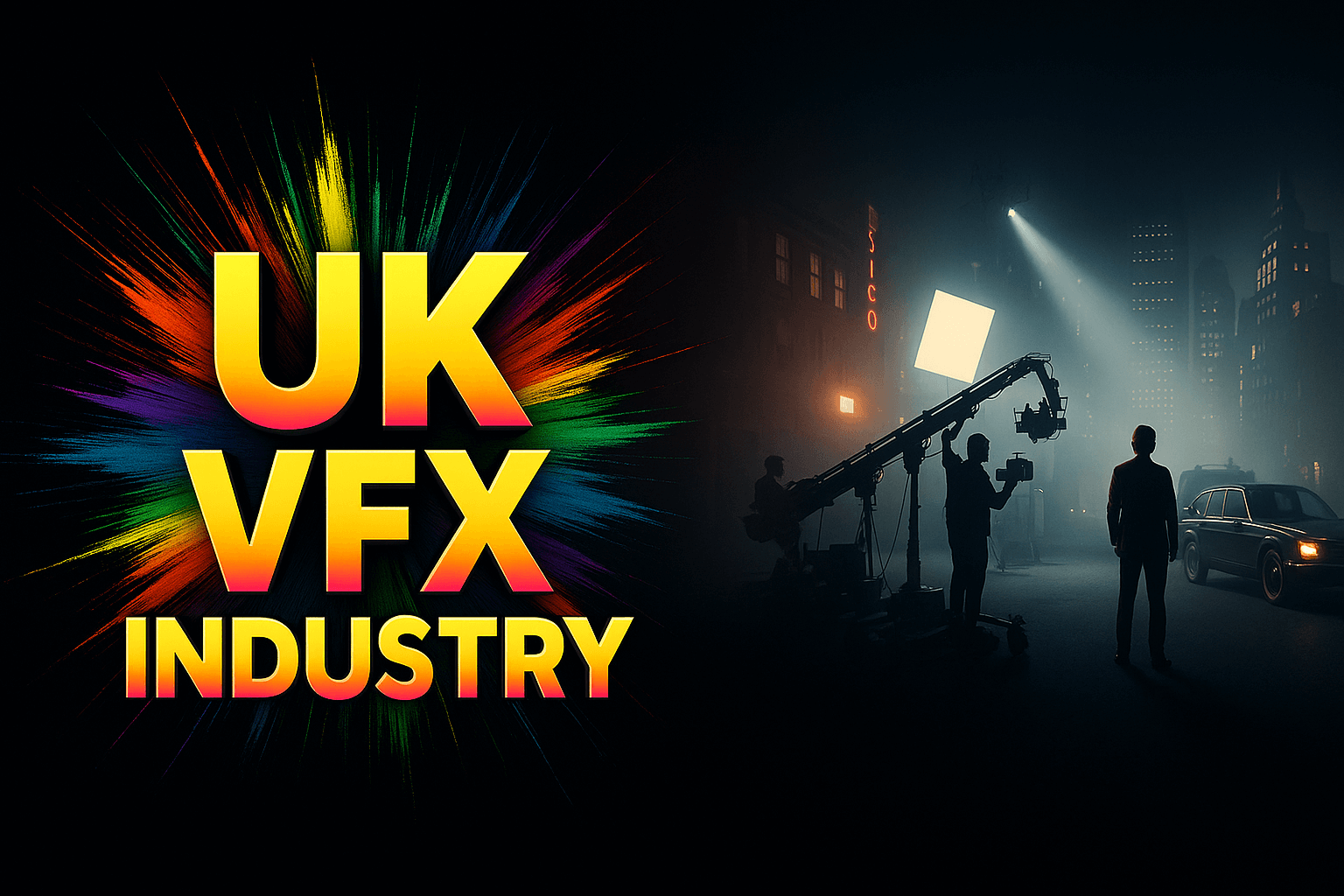UK VFX Industry: The Return of a Global Leader

Introduction
The United Kingdom’s screen sector, a world leader in visual effects, post-production, and animation, has endured a period of significant volatility. For a senior executive, navigating the roller coaster of a post-COVID peak, followed by a post-strike slump, has made strategic planning a daunting task.
However, a new reality is taking shape. The UK has solidified its position as the world’s second-largest VFX hub, a title it holds not just through volume but through an “unrivaled track record of quality”. This resurgence is a direct result of a strategic policy overhaul designed to attract international productions and foster local talent.
This article will provide a comprehensive, executive-level guide to the new landscape of the UK VFX industry, detailing how recent tax credit reforms, combined with a world-class talent base, are creating an environment ripe for investment. I will show you how a platform like Vitrina can act as a force multiplier, enabling you to find and partner with the top-tier talent and companies driving this next wave of growth.
Table of content
- The Resurgence of the UK VFX Industry: A World-Class Hub
- The Power of Policy: New Tax Credits Reshape the UK Screen Sector
- Beyond the Tax Credit: Talent, Technology, and Inward Investment
- How Vitrina Empowers Strategic Investment in the UK VFX Industry
- Conclusion: The Future is Here for the UK’s Screen Sector
- Frequently Asked Questions
Key Takeaways
| Core Challenge | The UK screen sector is recovering from recent downturns, with a challenge to attract a consistent pipeline of international work. |
| Strategic Solution | Leverage new, more competitive tax credits and the UK’s world-class talent pool to establish a strong presence, attract inward investment, and build a resilient supply chain. |
| Vitrina’s Role | Vitrina provides the verified intelligence on UK-based VFX, post-production, and animation companies needed to find, vet, and connect with top-tier partners. |
The Resurgence of the UK VFX Industry: A World-Class Hub
The UK has a long-standing reputation as a global leader in visual effects. Its creative and technical prowess is evidenced by its remarkable track record: “12 out of the last 15 Oscar-winning VFX films had UK roots”.
The industry’s resilience was tested by a series of unprecedented events, including the COVID-19 pandemic and recent labor strikes. While these events led to a temporary downturn in work, the UK Screen Alliance reports that the industry is now in a period of recovery, with a full return to pre-downturn levels expected to accelerate from Q3 2025 onwards.
This recovery is not just a return to normal; it is a springboard for a new phase of growth, driven by key strategic advantages that the UK has carefully cultivated. London has solidified its status as the world’s second-largest VFX hub, a testament to the nation’s deep investment in a world-class talent base and its innovative approach to overcoming logistical challenges.
The UK’s ability to adapt has been a key factor in its success. During the height of the pandemic, the industry was able to transition nearly 10,000 workers to remote work in just a few weeks, demonstrating a technological agility that ensured the flow of projects continued.
This proactive response, combined with a strong advocacy body and a favorable policy environment, has set the stage for a powerful resurgence, one that executives should be watching closely for new partnership and investment opportunities.
The Power of Policy: New Tax Credits Reshape the UK Screen Sector
A key driver of the UK’s screen sector success is its government-backed tax relief system, which is seen as a powerful tool for attracting inward investment. According to Neil Hatton, CEO of UK Screen Alliance, for every £1 of tax relief given, it generates £8.30 of value for the UK economy, a clear indicator of its strong return on investment.
A major recent policy win has been the reform of the tax credit structure to eliminate a previous “anomaly” that capped a production’s eligible spend at 80% of its global budget. This cap often forced productions to take work, particularly portable parts like VFX, to other territories to access incentives there, leading to a loss of billions in potential revenue.
The new structure has removed the 80% cap for VFX spend, making the entire visual effects budget eligible for a net rate of 29.25%. This strategic change means that productions can now utilize the UK’s excellent studio facilities for filming while simultaneously taking advantage of the UK’s world-class VFX talent.
Additionally, new tax credits for independent films and lower-budget animation projects (under £15 million) now offer a highly attractive rebate of 39.75%, encouraging growth at the local level and providing a strong incentive for major studios to produce films that fit within that budget range. This shows a comprehensive, strategic approach to stimulating growth across the entire spectrum of the screen sector.
Beyond the Tax Credit: Talent, Technology, and Inward Investment
While tax credits are a powerful motivator, they are only part of the story. The UK’s true competitive advantage lies in its world-class talent and its strategic approach to maintaining a robust talent pipeline.
The industry faced a challenge during its recent peak, when a shortage of talent led to rapid promotions and an overall strain on the workforce. However, industry bodies like UK Screen Alliance are actively addressing this by collaborating with universities to create a new curriculum that incorporates the latest advancements in technology, including machine learning, real-time engines, and virtual production.
This ensures that the next generation of visual effects artists are equipped with the skills the industry demands.
The UK is now seeing a fascinating reversal of a previous trend: foreign companies are establishing new branches in the country to tap into these incentives and the talent pool. International studios from Sweden and France are setting up new facilities in London, and American companies are opening studios in cities like Glasgow.
This foreign direct investment is a clear signal that the UK is seen not just as a location for work but as a long-term hub for business and innovation. These new partnerships and investments are a crucial part of the UK’s strategy to not just recover but to expand its global footprint and solidify its position as a powerhouse in the screen sector. To learn more about this trend, read this article on how tax reform is reshaping the VFX industry.
How Vitrina Empowers Strategic Investment in the UK VFX Industry
For an executive seeking to make a strategic move into the UK market, the key is access to timely, accurate intelligence. The traditional methods of relying on a limited network or outdated data are no longer viable in a fast-moving, competitive environment.
Vitrina provides a centralized, global source of truth that empowers you to find, vet, and connect with the right partners with precision. With Vitrina, you can filter and search through a comprehensive database of nearly 200 UK-based VFX, post-production, and animation companies, identifying their specializations, leadership, and track record.
The platform’s rich metadata links projects to companies and key executives, allowing you to see which studios have worked on Oscar-winning films or have a proven track record in a specific genre.
This deep-level insight allows you to make informed decisions and build a highly qualified business pipeline. Whether you are looking for a creative partner for a high-end film or an animation studio for a lower-budget project, Vitrina provides the essential intelligence needed to navigate the UK’s dynamic market and invest with confidence.
Conclusion: The Future is Here for the UK’s Screen Sector
The UK’s screen sector has not just weathered recent storms; it has emerged stronger and more strategically positioned than ever before. Its world-class talent, combined with powerful new tax incentives and a proactive approach to policy, has created an environment that is highly attractive to both local and international investment. The industry is on the cusp of a powerful resurgence, and the opportunities for collaboration are immense.
Navigating this landscape requires more than just a good idea; it requires intelligence. Vitrina provides the essential data and connectivity to help you find the right partners and make the right strategic moves. By leveraging a single source of truth, you can confidently invest in the UK’s vibrant screen sector and become a part of its next chapter of success.
Ready to make smarter, faster decisions in the new era of content production? Sign-up Today
Frequently Asked Questions
The UK VFX industry has experienced significant volatility since 2019, including a major peak in 2021-2022 followed by a slump. However, it is now in a recovery phase and is expected to see a strong resurgence from Q3 2025 onwards, driven by new tax credit reforms.
The UK has introduced a new tax credit for VFX that is immune from the previous 80% global budget cap, offering a net rate of 29.25%. For independent films and low-budget animation projects (under £15 million), a new, more attractive rebate of 39.75% is also available.
According to the UK Screen Alliance, London is the second-largest VFX hub in the world, a position it holds due to its world-class talent, technology, and track record of quality.
Foreign studios are now establishing new branches in the UK to take advantage of the favorable business climate and new tax credits. This is a reversal of a previous trend and signals a long-term commitment by international players to the UK’s screen sector.

























